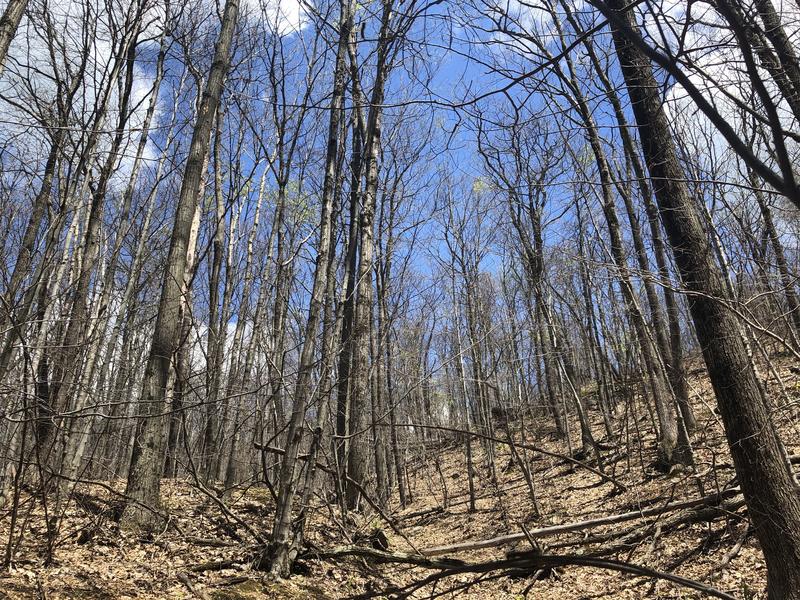‘Absolute Nightmare Scenario’: Caterpillar Outbreak Defoliating Northeast Trees

This hillside in Monkton, Vt., has been completely defoliated by LDD caterpillars. Most of the trees may be able to grow new leaves later this summer, but drought could exacerbate the stress caused by the caterpillars. (Jane Lindholm/VPR)
The emergence of the 17-year cicadas has dominated bug news of late, but in the northeastern parts of the U.S. and Canada, another cyclical menace has emerged that has the potential to do more lasting damage.
Several weeks ago, Mark Boltz-Robinson started noticing that a couple of red oaks on his Vermont property were thinning at the top, and he wondered if it might be due to stress from drought conditions.
“But then one of them literally was, like, overnight, [I] woke up the next morning and it was like: ‘Woah, this tree is gone. What the heck?’ And then of course they started showing up, crawling all over the property.”
Boltz-Robinson is referring to an invasive critter known familiarly as the gypsy moth caterpillar. Rather than use an outdated name, we’re going to refer to them in this story as LDD caterpillars, shorthand for their Latin name: Lymantria dispar dispar. But people in this part of Monkton, Vt., might have other … unprintable … names for them as well.
Neighbors report finding LDD caterpillars in their hair while they mow the lawn, covering the foundation of their houses and dangling from trees while they walk. Some are making a sport of trying to squish them with their cars while they drive along the dirt roads in town.
There are so many caterpillars in the trees that it constantly sounds like it’s raining. Except, it’s not raining. It’s caterpillar poop — called frass — falling through the trees.
